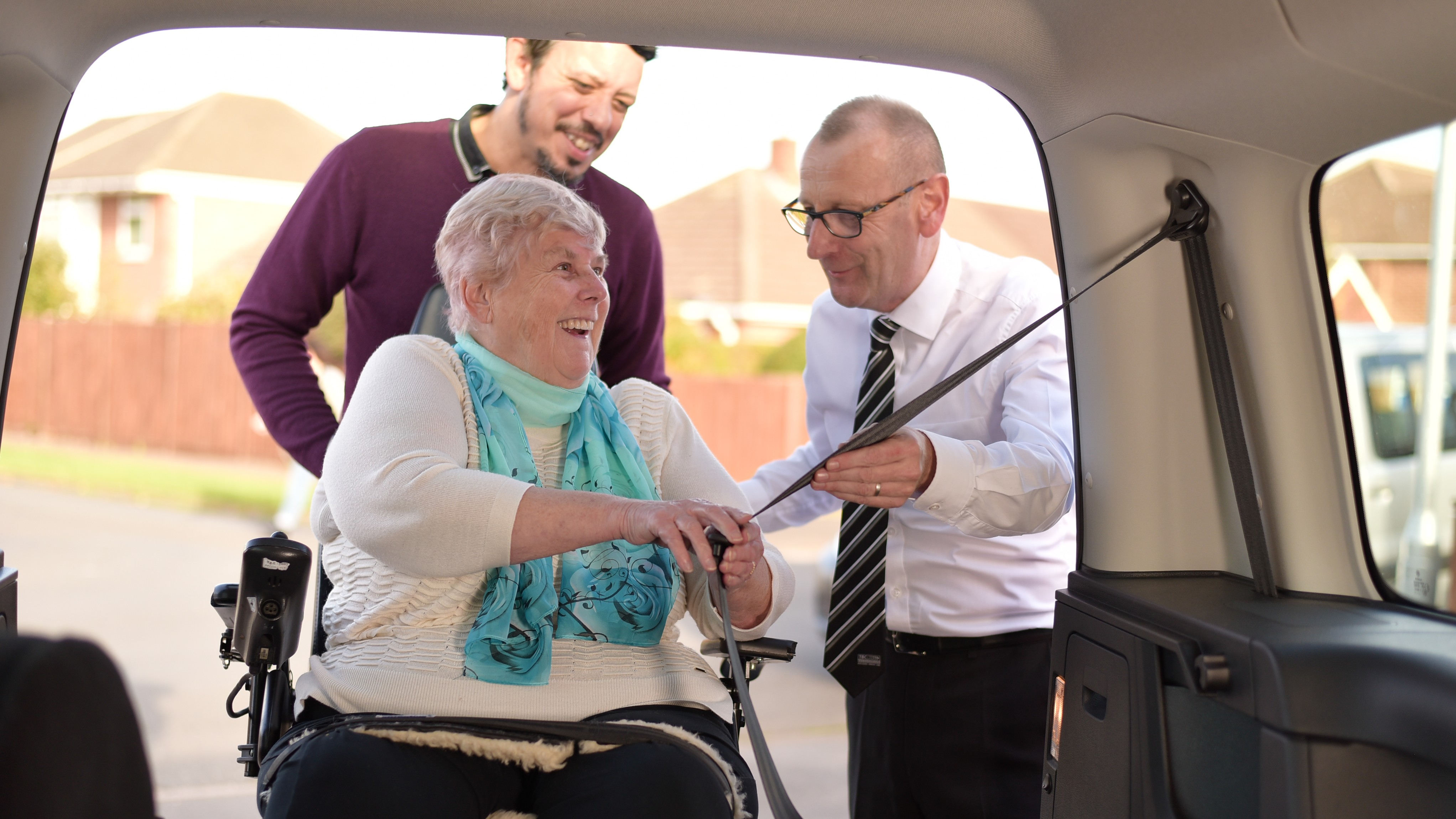If you’ve never travelled in a WAV, your first journey might feel quite different from a standard car trip.
That’s because WAVs are converted so a wheelchair user can stay in their wheelchair when travelling. And that changes a few things, for drivers and passengers.
Graham Lloyd has worked with WAV converters for years. Here, he shares what you can expect if you’re new to WAVs.
- What are the biggest changes you’ve seen in WAVs in recent years?
- What’s the biggest difference between driving a WAV and driving a car?
- How does a WAV journey compare to sitting in a standard car seat?
- How important is it to test drive a WAV?
- What are the other options?
- How do Nearly New WAVs differ to a new WAV?
One of the biggest improvements in Wheelchair Accessible Vehicles (WAVs) has been how ramps work. In the past, ramps were heavy and tricky to lift. This could make things hard for anyone helping someone who uses a wheelchair. But things have changed.
Now, many WAV converters have added something called gas struts. These help take the weight of the ramp, so it feels lighter and easier to move. You no longer have to lift the whole thing yourself. This makes getting in and out of the vehicle much easier.
Another great change is the inside of the vehicle. It’s now quieter and more comfortable for wheelchair users. Converters use plywood under the floor. This helps stop echoing, so it sounds nicer inside. The flooring and side panels are better too. They use materials like fibreglass and carpet that’s similar to what you’d find in a car boot.
All of this means WAVs now feel more welcoming. They’re better to travel in, and they look and feel more like a standard car. These changes show how converters are working hard to make things better for customers.
One of the biggest differences is ground clearance. Because a lot of WAVs have lowered floors you do not have the same ground clearance as a car, so if you travel over a speed bump a little too fast then the bottom of the WAV may hit the bump.
Also, WAVs tend to be bigger than cars, in height, length and width, so it’s important to remember that you might not fit into the same parking spaces and have restricted height access in some cases.
As the wheelchair user remains seated in their wheelchair, how does this compare to sitting in a standard car seat?
You do not necessarily have seats next to you, so it can feel a bit odd compared to sitting on a shared rear seat in a standard car.
Your seated position could be towards the rear of the vehicle, so depending on the size of WAV this can make it harder to communicate with the driver or other passengers. This is a big change if you have been used to sitting side by side with the driver in a standard car, and can change the dynamic of how you travel and talk to each other.
That said, you will find that converters often offer a number of seating configurations for their vehicles. It’s really important to discuss this with them to find the one that’s best for you.
In a WAV, you’re seated in the wheelchair which, although safely restrained, is not fixed to the floor in the same way as a car seat so you may feel some additional movement. And as you’re generally sat higher than if you’re sitting in a car seat, your eyeline could be higher, which could give you a different view out of the windows.
In time, most people get used to these compromises, they’re just some things to be aware of before deciding on a WAV.
It’s the most important thing! Have as many test drives as you possibly can, customers normally lease their WAV for five years, so you need a good indication of what it’s like to live with it now and for the next few years.
Before the test drive, plan the route in advance and go on a journey that you’re used to, along with the places you may need to park. I recommend taking all the equipment you would normally need and drive on roads where there are speed bumps and pot holes, as well as on higher speed roads with smooth surfaces. This will give you a chance to think about comfort, road noise and how the vehicle rides.
Are there any other options aside from a WAV if you are a wheelchair user and struggling with a standard car?
If you’d prefer to stay in a standard car then the Motability Scheme offers a range of adaptations to help get in and out of a car. A good option for wheelchair users are person hoists, these enable you to lift someone out of their wheelchair and guide them into the front passenger seat. While person hoists can be helpful, it’s important to note that the person operating the hoist should be fairly able-bodied and flexible. If you’re a full-time wheelchair user and you struggle to transfer yourself onto a car seat, with or without assistance, then a WAV is your best option. But the only way to know is to try one.
Nearly New WAVs could be a more affordable way to lease a Motability Scheme WAV with a lower Advance Payment than a new WAV. Nearly New WAVs are on a three-year lease, as opposed to new WAVs which are a five-year lease. If a customer has a condition that frequently changes then the shorter lease may suit them better. Bear in mind that with Nearly New WAVs, you’re limited to what is available in the marketplace when you are ready to choose your vehicle.
If you’re new to the Motability Scheme and would like to find out more about leasing a WAV, you can browse our selection of models and also find your nearest WAV supplier.
Get more information about the Scheme
Thousands of people use the Motability Scheme to stay mobile.
You’ll get a full package with us. We’ll cover your insurance, servicing and breakdown, and your MOTs.
Request information to see how we could help you.
Related Articles
The future of WAVs: e-VITA and new conversations with manufacturers
![]()









